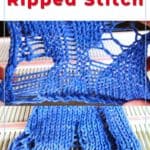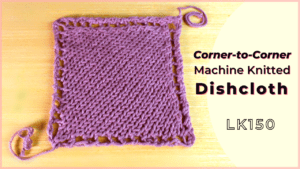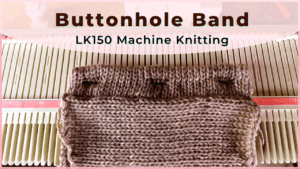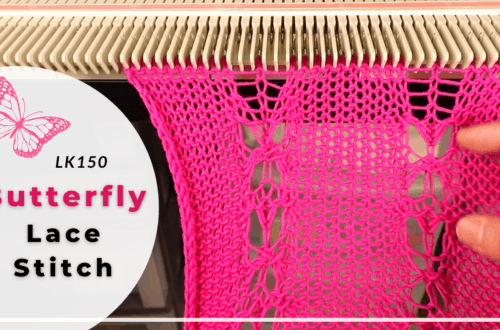
The intentionally ripped stitch with the machine knitting
In the last few years, it has been trendy to have different types of ripped stitches in a sweater. Many high-end designers showcase their intentionally ripped sweaters with a high price tag. It might not be your style, but just like ripped jeans, a ripped sweater has a special character that appeals to a certain group of people.
How do we recreate the random, naturally looking ripped stitches in a new sweater is the challenge of this project. We use an LK150 knitting machine to try several ways to create the “ripped” wear-and-tear look. This includes ripping at the cast on edge, in the middle of a stockinette stitch, and also a horizontal ripped stitch.
Watch the video below for the intentionally ripped stitches on a knitting machine
Machine knitting setup for the ripped stitch
There is no fixed way of doing an intentionally ripped stitch on a sweater. The goal is to make the rip look natural and random, just like you have been wearing that item for a long time. If you make mistakes here and there, it will not matter either.
Any knitting machine will work with the technique here. Since we are doing hand manipulation, we do not need any patterning device or a ribber. I use a basic LK150 knitting machine, you can use a standard or bulky gauge knitting machine.
You might want to experiment with different yarn and tension to find the look you like. Again, the exact tension and yarn size are not critical for a “ripped” stitch.
Step-by-step picture tutorial for a ripped stitch
Here we have 3 different types of intentionally ripped stitches.
- Ripped stitch from the cast-on edge.
- Ripped stitch in the middle of the fabric.
- Horizontal ripped stitch.
See the pictures below.
You can mix different stitch numbers and slanting directions for different hole sizes to achieve a natural look.


(1) Ripped stitch starting from the cast-on edge
Before casting on, decide how many stitches you want to be the ripped stitches. Move those stitches to the “A” non-working position.
Cast on the other stitches normally and knit the length you like. I use a simple E-wrap cast-on. Most other cast-on methods will work too.
This creates ladders or lines. To increase or decrease the size of the “holes”, you can transfer stitches to the left or right. You can transfer one or more stitches at a time.
If you keep transferring stitches to one direction, the opening will be slanted to one direction.
To close the hole, you can transfer the stitch from the next needle or place the empty needles back to the “B” working position. Then knit a few rows.
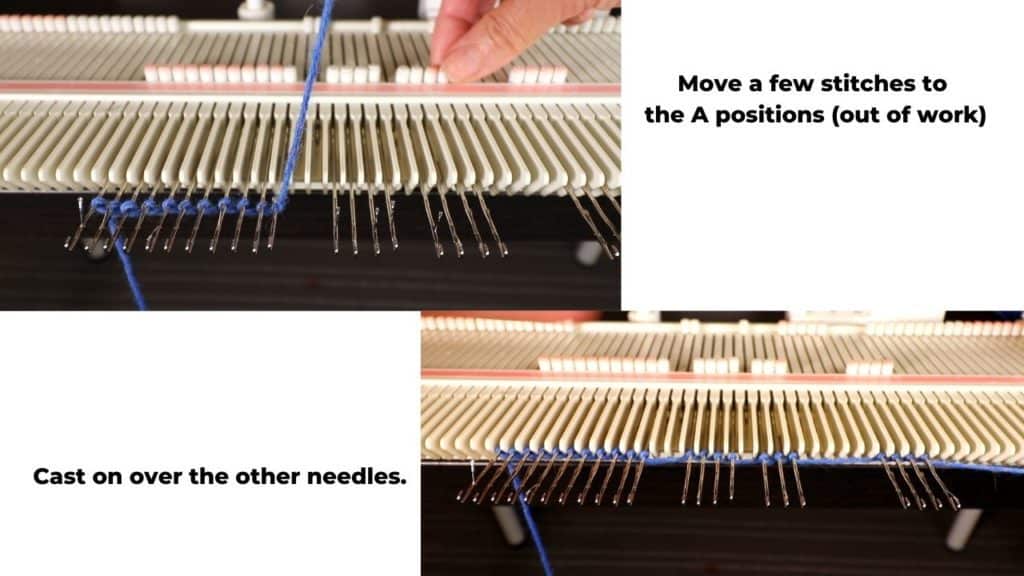
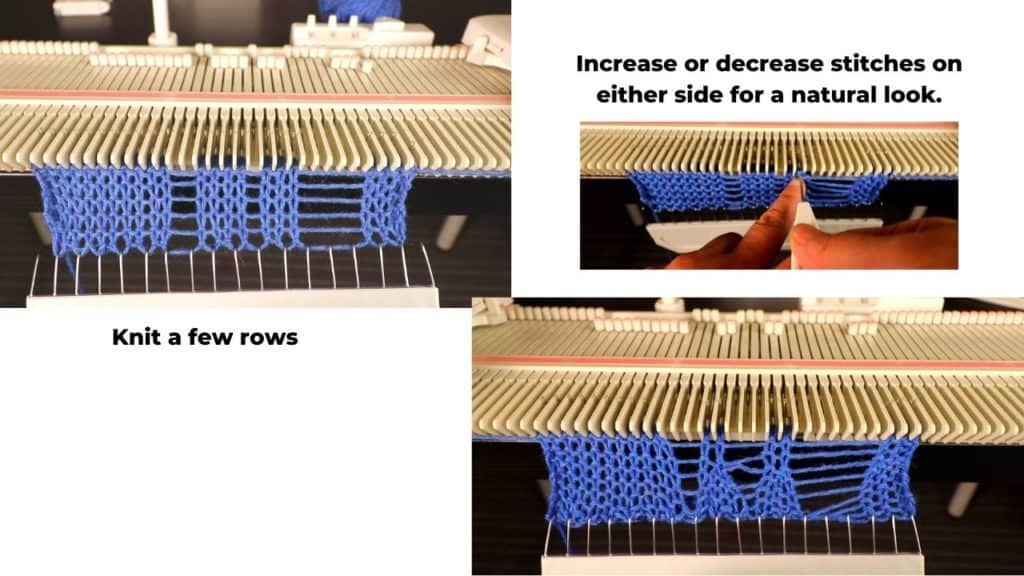
(2) Ripped stitches in the middle of the fabric
In the middle of the fabric, we can transfer one or more stitches to the adjacent needles. Place those empty needles in the “A” non-working position. Knit a few rows.
To increase or decrease the size of the opening, simply transfer stitches to the left or right. Then we knit as usual.
To close the opening, transfer the stitches to the empty needles, or place empty needles in the “B” position for normal knitting.
Knit a few rows.


(3) Horizontal ripped stitch
Short horizontal ripped stitch
If the horizontal ripped stitch is only 1-3 stitches wide, you can simply transfer those stitches to the adjacent stitches. Place the empty needles in the “A” non-working position.
In the next row, cast on the empty stitches (E-wrap or other methods). Then knit a few rows.
Long horizontal ripped stitch
If the horizontal rip covers more stitches, we can hand knit that row. Bind off a few stitches to create an opening. Place empty needles in the A position. Continue hand-knitting the row until the end.
In the next row, hand-knit until the bound-off stitches. Cast on the empty stitches (E-wrap works fine here), then continue to hand-knit the rest of the row.
Push the “empty needles” out to the “D” position for easier knitting in the next row.
Knit as usual.
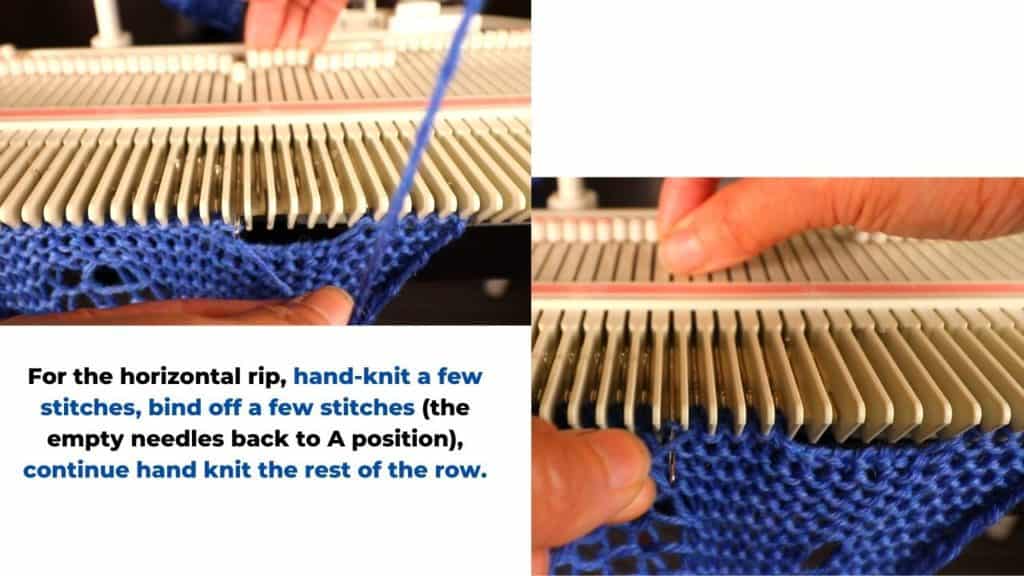

That is the final look of the horizontal ripped stitch. After taking it off the machine, the opening is less stretched.
This opening looks similar to the ripped jeans around the knees.

If you are interested in shopping for an LK150 knitting machine. Check out the link here (affiliated link).
For yarn craft and machine knitting supplies, check out our Amazon page (affiliated link).
Recent Posts


